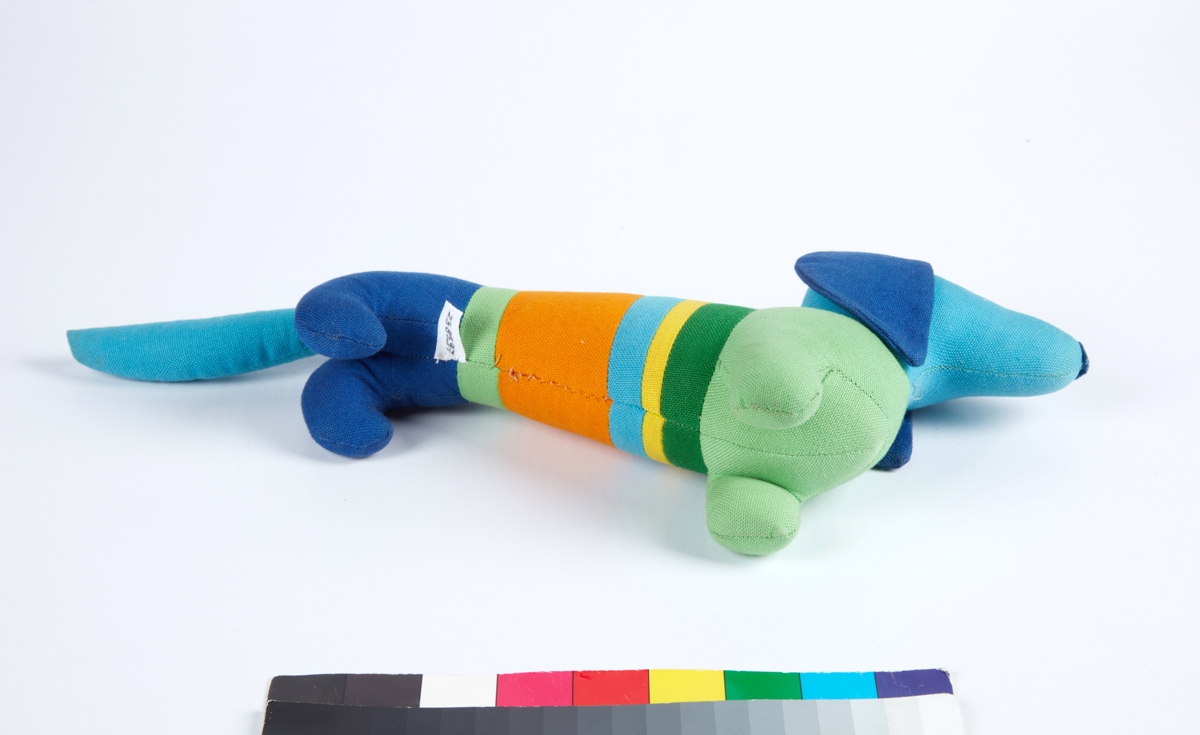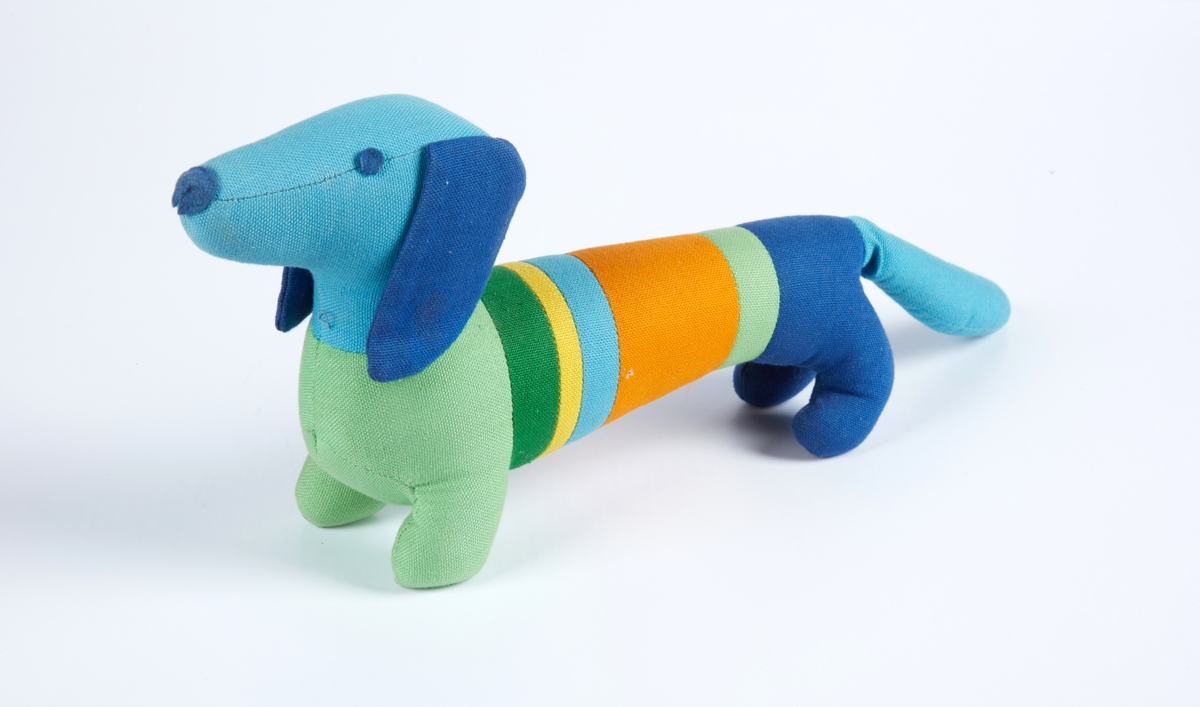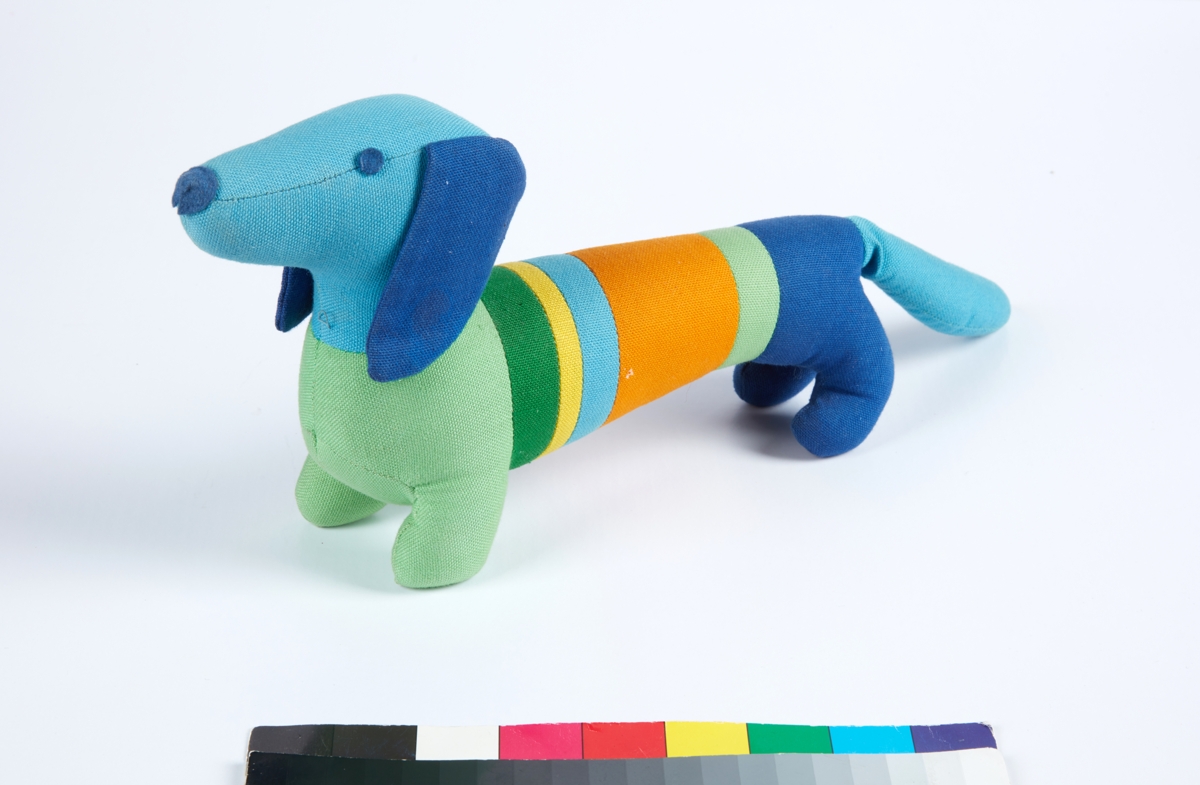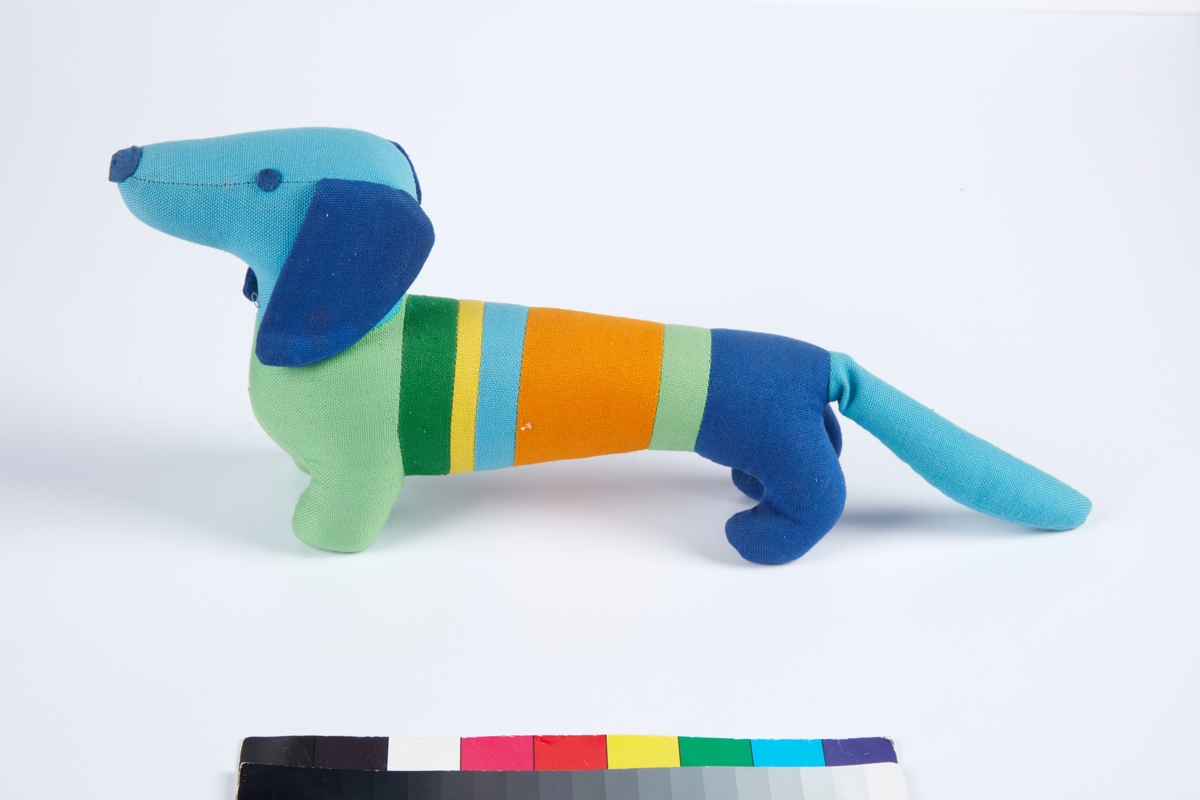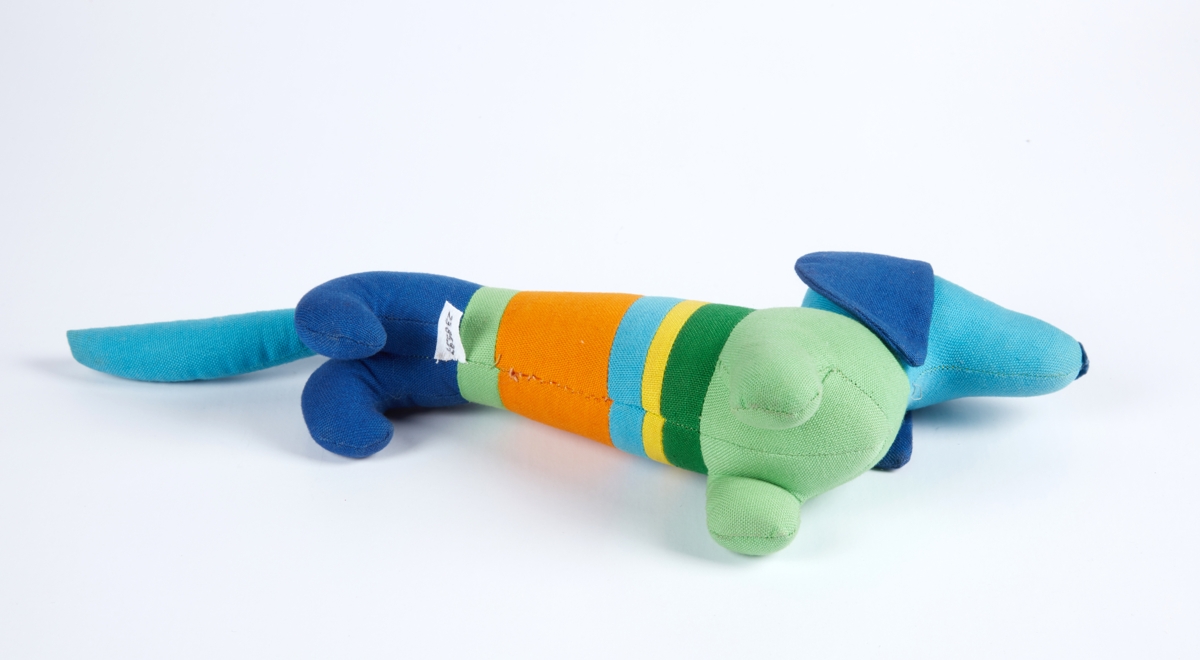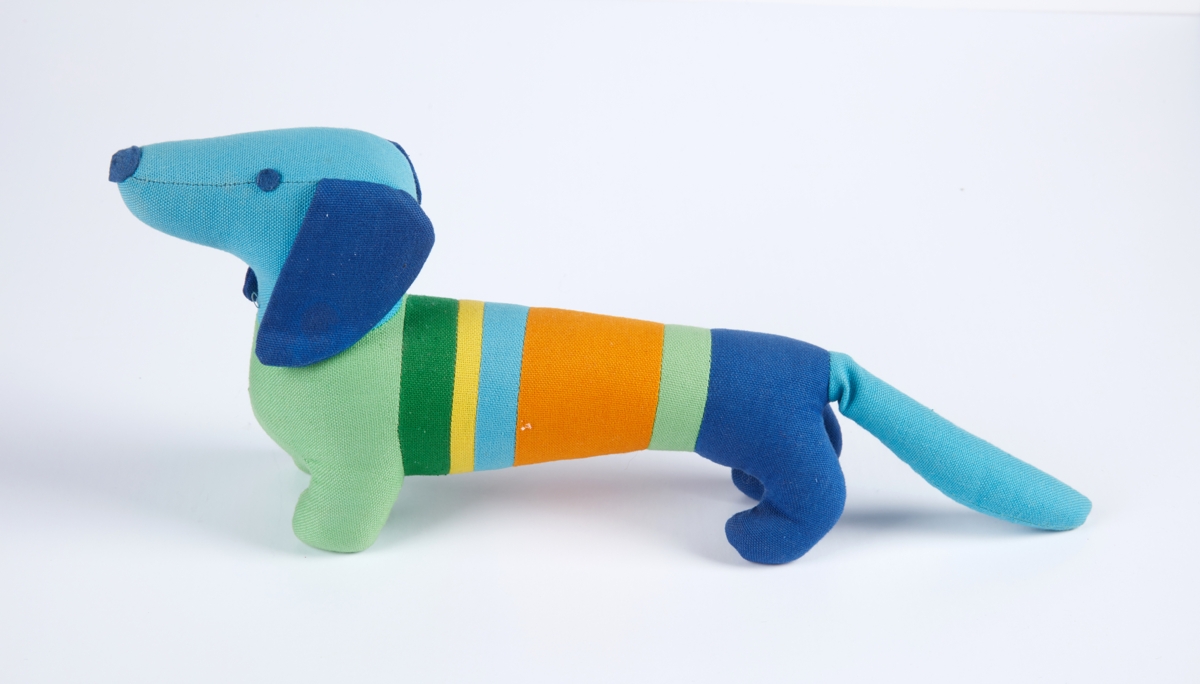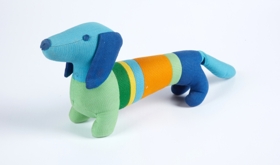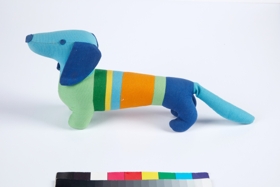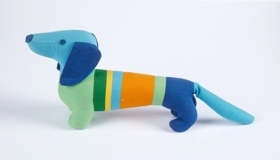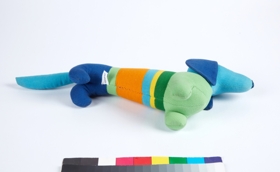Although mascots encapsulate the spirit of the host country, and act as a bridge between visitors and their hosts, they are also a significant source of revenue. It was Schuss, the unofficial mascot of the Grenoble Games in 1968, that heralded the arrival of the first novelty items. They now flood the market at each edition of the Games, regardless of quality!
The Organising Committee was certainly aware of the aspect when it created Waldi, a little dachshund. Not only is the dachshund “very popular in Bavaria, it also has qualities that are essential to athletes: strength, determination and agility.” Its commercial exploitation began in mid-1970, as did that of the emblem. According to the Official Report, “There are over 50 “Waldi” license holders, and manufacturers are obliged to pay a minimum license fee in advance.” Two million Waldi coat hangers, key rings, purses, cuddly toys, etc, were sold in 20 countries.
Otl Aicher, Visual Creation Department Director for the 1972 Munich Games, devised an image for a global Games. An essential part of this was a six-colour palette, each colour a symbol of peace and freedom. This rainbow was used on souvenirs like Waldi, the Games mascot.
